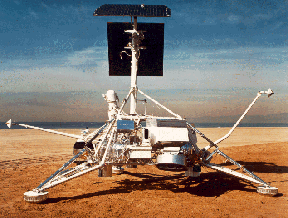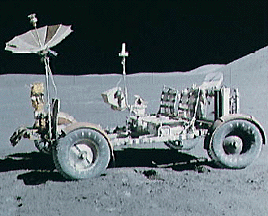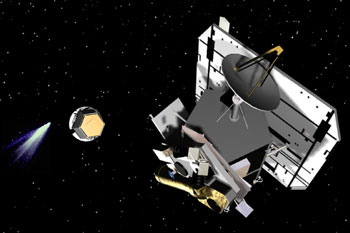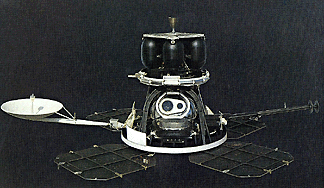Image of Lunar Orbiter spacecraft
NASA/National Space Science Data Center
Lunar Orbiter
During 1966 through 1967, five Lunar Orbiter spacecrafts were launched, with the purpose of mapping the Moon's surface in preparation for the Apollo and Surveyor landings.
All five missions were successful, with 99% of the lunar surface photographed, including the farside. Also, detailed images were obtained of 20 areas pre-selected as possible landing sites for future landing missions.
After orbiting the Moon and returning hundreds of photographs, each Lunar Orbiter spacecraft was commanded to crash into the surface, destroying itself.
You might also be interested in:

The Surveyor missions of 1966 through 1968 were the next step in space travel to the Moon, following the Ranger missions. Their goal was to perform "soft" landings on the lunar surface, meaning that the
...more
The Hubble Space Telescope (HST) is really neat! It was first launched in 1990, but scientists started building it in the 1970's! We have found all kinds of objects like stars, nebulae and galaxies. The
...more
Apollo 11 was the first mission that landed a person on the moon. On July 16, 1969, the U. S. rocket Saturn 5 was launched carrying the lunar landing module Eagle. The Eagle was released and it reached
...more
Apollo 12 was launched on Nov. 14, 1969 and arrived at the Moon three days later. Astronauts Charles Conrad and Alan Bean descended to its surface, while Richard Gordon remained in lunar orbit aboard the
...more
Apollo 15 marked the start of a new series of missions from the Apollo space program, each capable of exploring more lunar terrain than ever before. Launched on July 26, 1971, Apollo 15 reached the Moon
...more
NASA chose Deep Impact to be part of a special series called the Discovery Program. This program is for cheap, scientific projects. In May 2001, NASA said it was ok to start with mission development for
...more
Galileo was a spacecraft that orbited Jupiter for eight years. It made many discoveries about Jupiter and its moons. Galileo was launched in 1989, and reached Jupiter in 1995. The spacecraft had two parts.
...more















